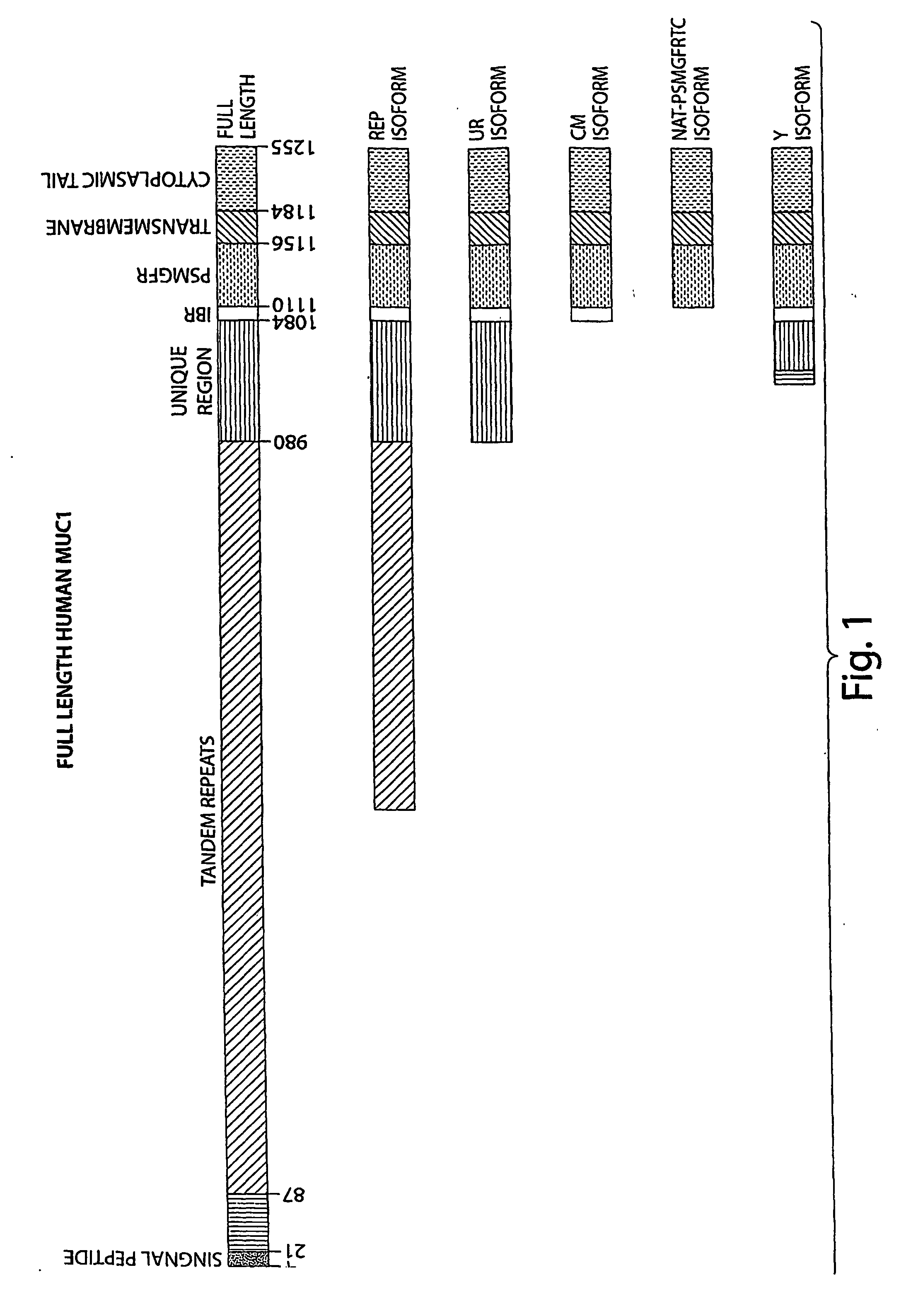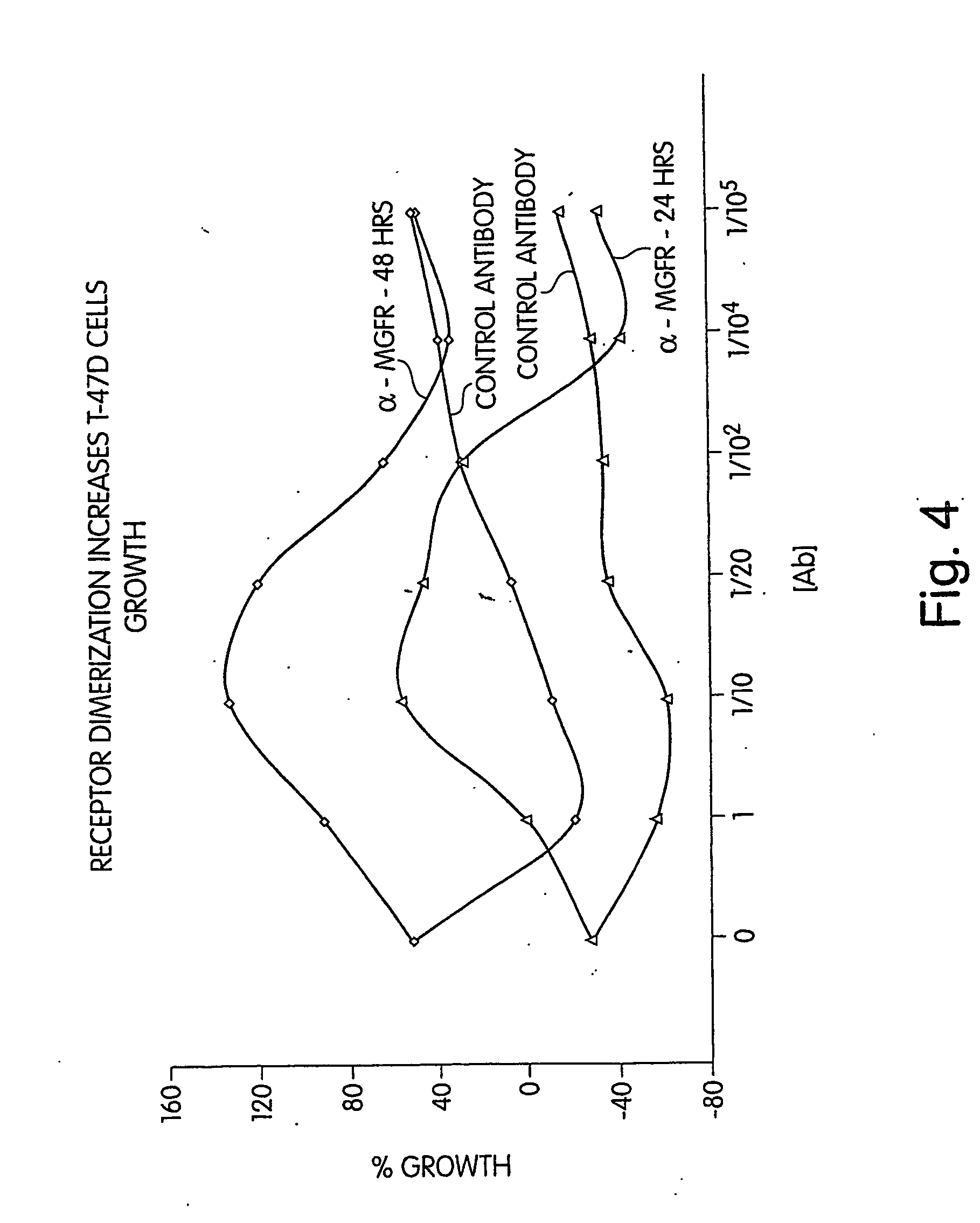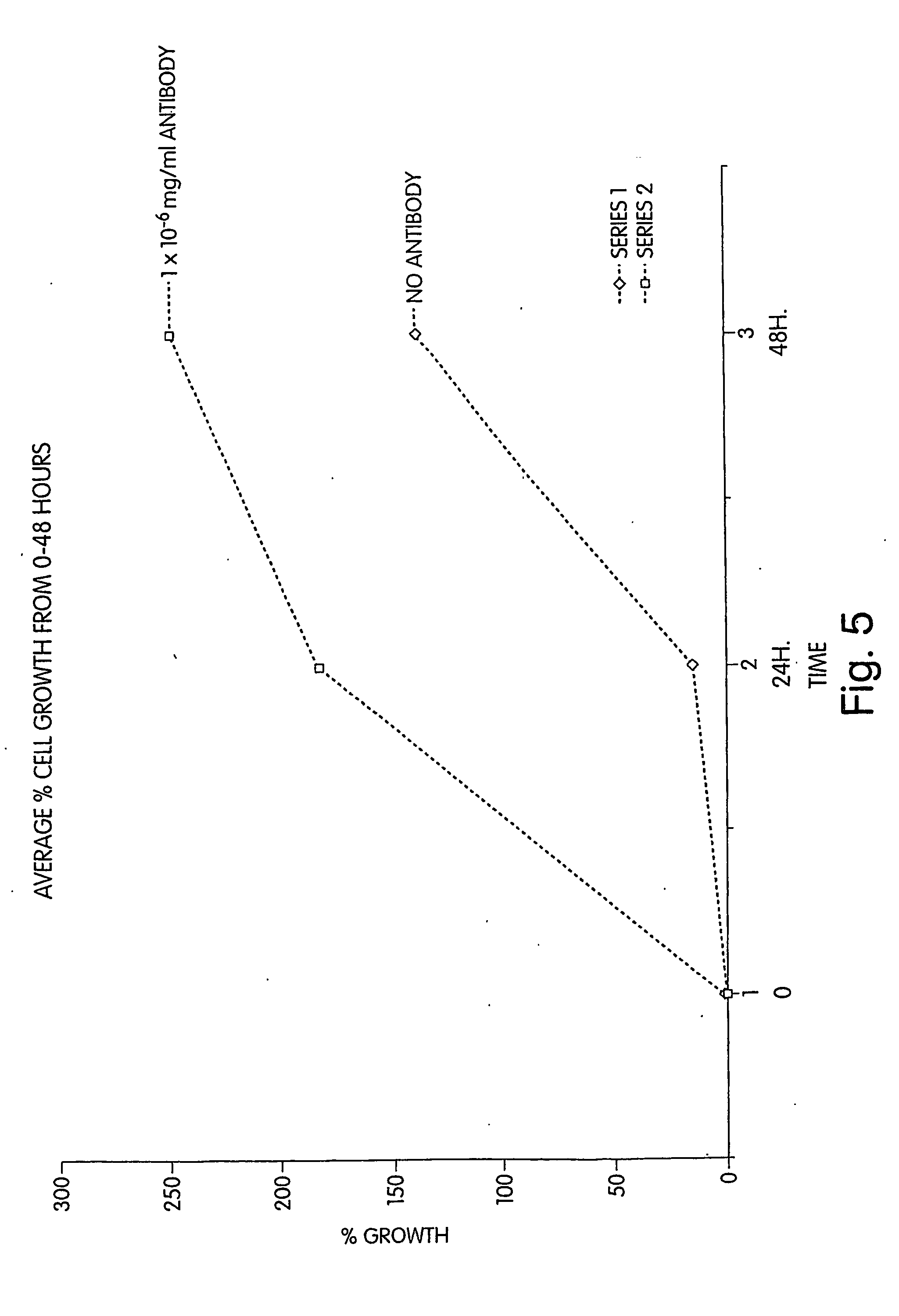Techniques and compositions for diagnosis and treatment of cancer (muci)
a technology of compositions and cancer, applied in the field of drug screening assays, can solve the problems of unfavorable intracellular processes of agents, and the link to cancer remains unclear, and achieve the effects of reducing or preventing interaction, promoting tumorigenesis, and reducing the cleavage of the interchain binding region of cell surface receptors
- Summary
- Abstract
- Description
- Claims
- Application Information
AI Technical Summary
Benefits of technology
Problems solved by technology
Method used
Image
Examples
example 1
Dimerization of the MGFR Portion of the MUC1 Receptor Triggers Enhanced Cell Proliferation Consistent with the Mechanism Presented for MUC1 Tumor Cells
[0298] This example demonstrates the effect of dimerization on the MUC1 receptor. In this example it is shown that exposure of cells to an inventive bivalent antibody grown against the MGFR region of the MUC1 receptor, at varying concentration, results in enhanced cell proliferation (or lack thereof) consistent with the mechanism presented for MUC1 tumor cells. A bivalent antibody was raised against either var-PSMGFR or nat-PSMGFR sequences shown in Table 1 (i.e., a single antibody having the ability to bind simultaneously to two MGFRs was produced). MUC1 tumor cells (T47Ds) were exposed to this antibody, and cell proliferation was studied as a function of concentration of the antibody. A growth / response curve typical of a growth factor / receptor—antibody response was observed. Specifically, at concentration low enough that only a sma...
example 2
Identification of Ligands that Bind to the MGFR Portion of the MUC1 Receptor
[0301] In an effort to identify ligands to the MUC1 receptor, synthetic, His-var-PSMGFR peptides, GTINVHDVETQFNQYKTEAASPYNLTISDVSVSDVPFPFSAQSGAHHHHHH (SEQ ID NO: 2), which is representative of the portion of the MUC1 receptor, that remains attached to the cell surface after cleavage of the interchain binding region, were loaded onto NTA-Ni beads (cat. #1000630; available from Qiagen GmbH, Germany) and incubated with cell lysates in the presence (FIG. 9) or absence (FIG. 10) of the protease inhibitor PMSF (phenyl methyl sulfonyl fluoride). Lysates from T47D cells were used because this breast tumor cell line is known to overexpress MUC1 and MUC1 ligand(s). T47D cells were cultured then sonicated for 1 minute to lyse the cells. Lysates were mixed with the PSMGFR peptide-presenting beads and incubated on ice with intermittent mixing for 1 hr. As a negative control, an irrelevant peptide, HHHHHHGEFTGTYITAVT (SE...
example 3
Demonstration that the Ligand that Interacts with MUC1 Cancer Cells is a Multimer
[0304] In this example, it is demonstrated that a ligand produced by MUC1 cancer cells that triggers cell proliferation in these cells is a multimer.
[0305] Protein bands at 17 kD, 23 kD, and 35 kD were excised from the gels described above in Example 2 of and submitted for peptide analysis. These gel bands purportedly contained ligands to the MGFR region of the MUC1 receptor. Recall that the 17 kD and 23 kD species bound to the MGFR peptide in the presence of the protease inhibitor, PMSF, while the 35 kD species bound when PMSF was not added to the cell lysate mixture.
[0306] The following peptide analysis was performed. Samples derived from the gel slices were proteolytically digested. Fragments were then separated by microcapillary HPLC which was directly coupled to a nano-electrospray ionization source of an ion trap mass spectrometer. MS / MS spectra was obtained on-line. These fragmentation spectra...
PUM
| Property | Measurement | Unit |
|---|---|---|
| Surface | aaaaa | aaaaa |
| Cell proliferation rate | aaaaa | aaaaa |
Abstract
Description
Claims
Application Information
 Login to View More
Login to View More - R&D
- Intellectual Property
- Life Sciences
- Materials
- Tech Scout
- Unparalleled Data Quality
- Higher Quality Content
- 60% Fewer Hallucinations
Browse by: Latest US Patents, China's latest patents, Technical Efficacy Thesaurus, Application Domain, Technology Topic, Popular Technical Reports.
© 2025 PatSnap. All rights reserved.Legal|Privacy policy|Modern Slavery Act Transparency Statement|Sitemap|About US| Contact US: help@patsnap.com



